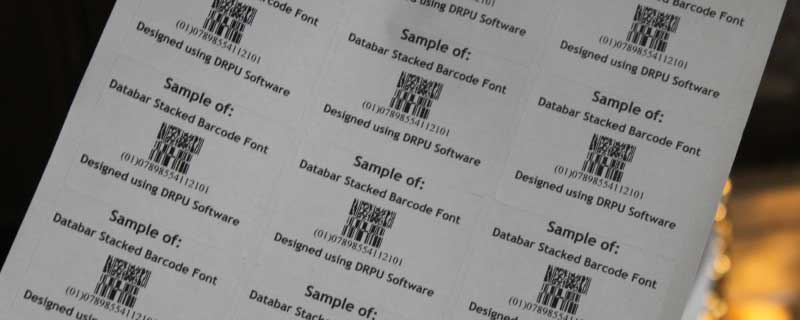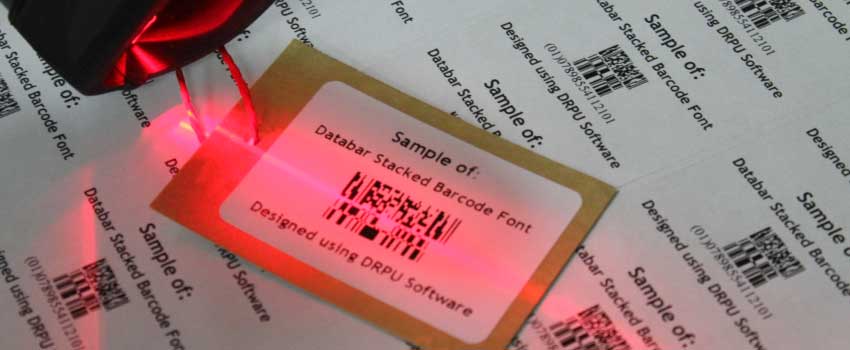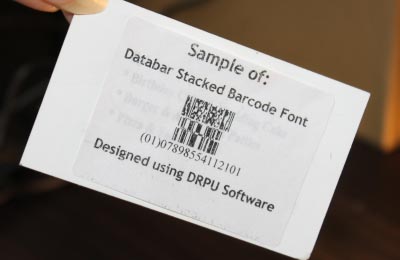Generate, Print, and Scan the Databar Stacked Barcode
Generating a GS1 DataBar Stacked Barcode requires specialized software and equipment. In this article, we will discuss the steps involved in generating a DataBar Stacked barcode.
-

-
Step 1: Obtain a GS1 Company Prefix
To generate a DataBar Stacked barcode, you will need a GS1 Company Prefix. This is a unique number that identifies your company and is used to create the GTIN (Global Trade Item Number) that is encoded in the barcode. You can obtain a GS1 Company Prefix by contacting GS1, the organization responsible for managing barcode standards.
-
Step 2: Choose a DataBar Stacked Barcode Format
There are several different formats of DataBar Stacked barcode, each with different specifications. You will need to choose the format that best meets your needs, based on factors such as the amount of data you need to encode and the size of the barcode.
-
Step 3: Select a Barcode Generator
To generate a DataBar Stacked barcode, you will need a specialized barcode generator that supports this format. There are several different software options available, ranging from free online tools to commercial software packages.
-
Step 4: Enter Barcode Data
Once you have chosen a barcode generator, you will need to enter the data that you want to encode in the barcode. This typically includes the GTIN, which identifies the product, as well as any additional data that you want to include, such as lot or serial numbers.
-
Step 5: Configure Barcode Settings
After entering the data, you will need to configure the settings for the barcode generator. This includes choosing the DataBar Stacked barcode format, selecting the appropriate symbology, and specifying any additional options, such as error correction or quiet zone size.
-
Step 6: Generate the Barcode
Once the settings have been configured, you can generate the DataBar Stacked barcode. The barcode generator will create a digital image of the barcode, which you can then print or save for later use.
-
Step 7: Verify the Barcode
Before using the DataBar Stacked barcode, it is important to verify that it is readable by a barcode scanner. You can do this using a handheld scanner or by using software that simulates a scanner. This will help ensure that the barcode can be accurately read by retailers or other parties that need to scan it.
In conclusion, generating a GS1 DataBar Stacked barcode requires obtaining a GS1 Company Prefix, choosing a barcode format, selecting a barcode generator, entering barcode data, configuring barcode settings, generating the barcode, and verifying its readability. By following these steps, businesses can create accurate and reliable DataBar Stacked barcodes that meet their specific needs.
Related Article:
Databar Stacked BarcodeThe Applications of Databar Stacked Barcode
Scan a Databar Stacked Barcode
Scanning a Databar Stacked barcode is a simple process that involves using a barcode scanner to read the barcode and retrieve the encoded information. In this article, we will discuss the steps involved in scanning a Databar Stacked barcode.

-
Step 1: Choose the Right Barcode Scanner
To scan a Databar Stacked barcode, you will need a barcode scanner that supports the Databar Stacked symbology. This type of barcode scanner is often referred to as a linear imager or 2D imager. The scanner should also be able to read the size of the barcode and have the appropriate field of view and scanning range.
-
Step 2: Position the Barcode for Scanning
The barcode should be positioned correctly to ensure that the scanner can read it accurately. The barcode should be placed in front of the scanner, and the scanner should be positioned so that the barcode is centered within the field of view. The scanner should also be at the appropriate distance from the barcode to ensure that it can read the barcode without difficulty.
-
Step 3: Aim the Scanner at the Barcode
To scan the barcode, you will need to aim the scanner at the barcode and press the trigger or button on the scanner. The scanner will emit a beam of light or a laser to read the barcode, and the encoded information will be displayed on the scanner's screen or transmitted to a connected device.
-
Step 4: Decode the Barcode
Once the barcode has been scanned, the encoded information will need to be decoded to retrieve the data that has been encoded in the barcode. This can be done using specialized barcode software or by manually decoding the barcode using the information provided in the barcode symbology specification.
-
Step 5: Verify the Barcode Data
After decoding the barcode, it is important to verify that the data retrieved from the barcode is accurate and matches the expected data. This can be done by comparing the data to a reference document or by checking the data against other sources of information, such as a product database or inventory management system.
In conclusion, scanning a Databar Stacked barcode involves choosing the right barcode scanner, positioning the barcode correctly, aiming the scanner at the barcode, decoding the barcode, and verifying the barcode data. By following these steps, businesses can ensure that their Databar Stacked barcodes are accurately scanned and the data they contain is retrieved and verified quickly and efficiently.
Databar Stacked Barcode can read a Different Types of Devices
A Databar Stacked barcode can be read by various types of barcode scanners and mobile devices that have an integrated camera and barcode scanning application. In this article, we will discuss the different types of devices that can read a Databar Stacked barcode.
-
Handheld Barcode Scanners:
Handheld barcode scanners are the most common type of device used to scan Databar Stacked barcodes. These scanners can read and decode barcodes from a distance and can be used to scan a barcode on a product or packaging without the need to physically touch it. Handheld barcode scanners can be connected to a computer or mobile device via a USB cable, Bluetooth, or Wi-Fi, allowing for easy data transfer and integration with other systems.
-
Mobile Devices:
Smartphones and tablets can also be used to read Databar Stacked barcodes. Many mobile devices have an integrated camera and a barcode scanning application that can be downloaded from an app store. These applications use the camera to scan the barcode and decode the information encoded in the barcode. Mobile devices are portable and convenient, making them ideal for inventory management, point-of-sale, and asset tracking applications.
-
Point-of-Sale (POS) Systems:
POS systems are commonly used in retail environments and can also be used to scan Databar Stacked barcodes. The barcode scanner is usually integrated into the POS system and can be used to scan barcodes on products during the checkout process. POS systems can also be used to track inventory and manage stock levels.
-
Kiosks and Self-Service Stations:
Kiosks and self-service stations can also be used to scan Databar Stacked barcodes. These devices are commonly found in public places like airports, train stations, and supermarkets. They can be used to check-in passengers, purchase tickets, and provide information on products and services. Kiosks and self-service stations usually have an integrated barcode scanner that can be used to scan Databar Stacked barcodes.
-
Fixed-Mount Barcode Scanners:
Fixed-mount barcode scanners are commonly used in manufacturing and warehouse environments. These scanners are usually mounted on a conveyor belt or production line and can be used to scan Databar Stacked barcodes as products move along the line. Fixed-mount barcode scanners are designed to be durable and can withstand harsh environments like extreme temperatures and humidity.
In conclusion, there are various types of devices that can read a Databar Stacked barcode, including handheld barcode scanners, mobile devices, POS systems, kiosks and self-service stations, and fixed-mount barcode scanners. The choice of device will depend on the specific application and environment in which the barcode needs to be scanned.
